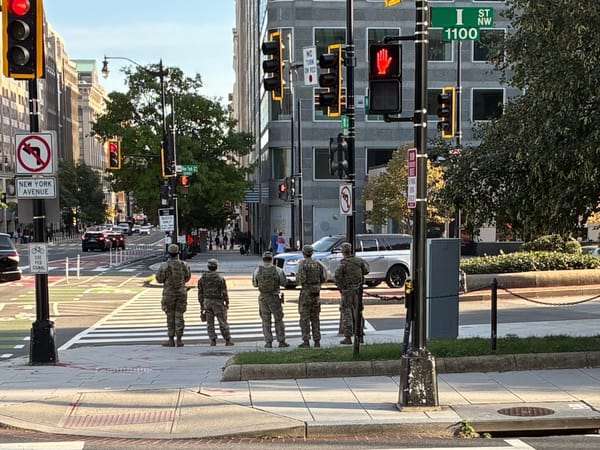When Intelligence Become Advocacy
The recently leaked CIA study on “High Value Targeting” Is Troubling On Many Levels
The recently leaked CIA study on “High Value Targeting” Is Troubling On Many Levels
On December 18, the Washington Post published a story on a 2009 CIA study entitled “Making High-Value Targeting Operations an Effective Counterinsurgency Tool”, part of a larger CIA series called “Best Practices In Counterinsurgency”. If I found the titles of the report and the series surprising and deeply troubling, what I found in the text of the report was even more so.
Some of you may be asking “But shouldn't the CIA be publishing intelligence reports like this?” The answer is no. Let me walk you through it by first providing you with a published, unclassified example of what an real intelligence assessment (or at least the executive summary of one) looks and feels like.
In 2007, the National Intelligence Council published a National Intelligence Estimate (NIE) on Iraq, which you can access here. Note the difference in tone between that 2007 report and the one just published by the Post. The 2007 Iraq NIE summary contains no policy advocacy language, just descriptions of trends and facts as the analysts who wrote the NIE saw them. The 2009 HVT study, on the otherhand, is very much a policy advocacy document:
A CIA review of high-value targeting (HVT) programs worldwide suggests that HVT operations can play a useful role when they are part of a broader counterinsurgency strategy. HVT operations are most likely to contribute to successful counterinsurgency outcomes when governments decide on a desired strategic outcome before beginning HVT operations, analyze potential effects and shaping factors, and simultaneously employ other military and nonmilitary counterinsurgency instruments.
The report then goes onto provide several historical examples of “best practices” in each of these categories. During my tenure at CIA, I never saw a document anything like this—something that can only be described as de facto policy advocacy vice a true, sober and objective evaluation of the history of counterinsurgency (COIN) campaigns over the last several decades. And the scope note for this study is also (at least in my experience) unprecedented:
The paper aims to convey lessons learned, provide a framework for evaluating the strategic utility of high-value targeting (HVT) operations, and assist policymakers and military officers involved in authorizing or planning HVT operations. Most of our source information relies on clandestine and defense attache reporting, discussions with HVT practitioners, a CIA-sponsored study on HVT operations in counterinsurgencies, and our review of current and historical case studies. (C//NF) [emphasis added]
The two previous papers in the “Best Practices in Counterinsurgency” series were OTI IA 2007–087 (Secret//NF), Making Insurgent Defector Programs an Effective Counterinsurgency Tool (C//NF), 3 December 2007, and OTI IA 2007–016 (Secret//NF), Improving Security Force Conduct (C//NF), 1 February 2007. (C//NF)
The specificity of the tactical advice is breathtaking for something purporting to be an intelligence study:
“The tendency of some insurgent groups to adapt to HVT efforts by becoming more decentralized suggests that a functional approach to targeting, aimed at sources of insurgent strength such as logistics and finances, can in some circumstances be more effective than targeting the group’s leadership structure…Removing individuals who are important to the organization’s core functions — such as those running its carbombing networks — has had a more demonstrable effect on AQI than disruptions of its senior command.”
The NIC and the CIA should be in the business of providing impartial, fact-based analyses of our adversaries, but they should not be in the business of pushing specific tactics and strategy options.
Indeed, the study itself left out one of the most important historical COIN episodes of the last 50 years: the CIA’s own Phoenix Program in Vietnam.
The infamous assassination and “neutralization” COIN program killed tens of thousands of known or suspected Viet Cong officials or sympathizers…and did absolutely nothing to prevent an eventual North Vietnamese victory in the war. The 2009 CIA study talks gingerly about potential “negative effects” of HVT operations even as it cites such brutal COIN campaigns as the ones waged by the French in Algeria or the majority Sinhalese Sri Lankan government’s de facto ethnic cleansing campaign against Tamils.
The bin Ladin as “isolated commander” section (p. 2) relies on “detainee reporting”, raising the question as to whether any of the reporting used in analyzing bin Ladin’s status or the status of other AQ leaders was obtained via torture, and thus raising questions about the accuracy of the alleged intelligence obtained from the detainees.
Ironically, the report notes that “HVT operations can capture the attention of policymakers and military planners to the extent that a government loses its strategic perspective on the conflict or neglects other key aspects of counterinsurgency.” The comment was made in the context of events in Thailand, but it could just as easily describe the U.S. government’s mindset vis a vis “The Drone War” and the very HVT strategy and tactics recommendations contained in this CIA report.





